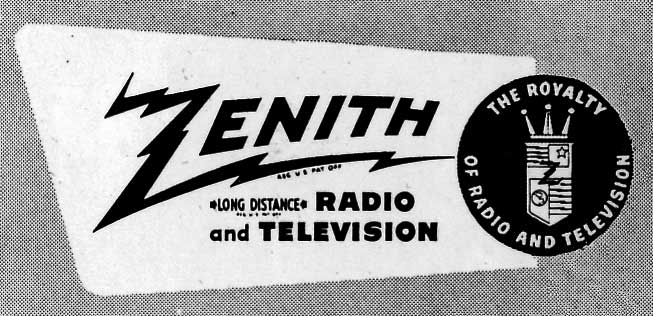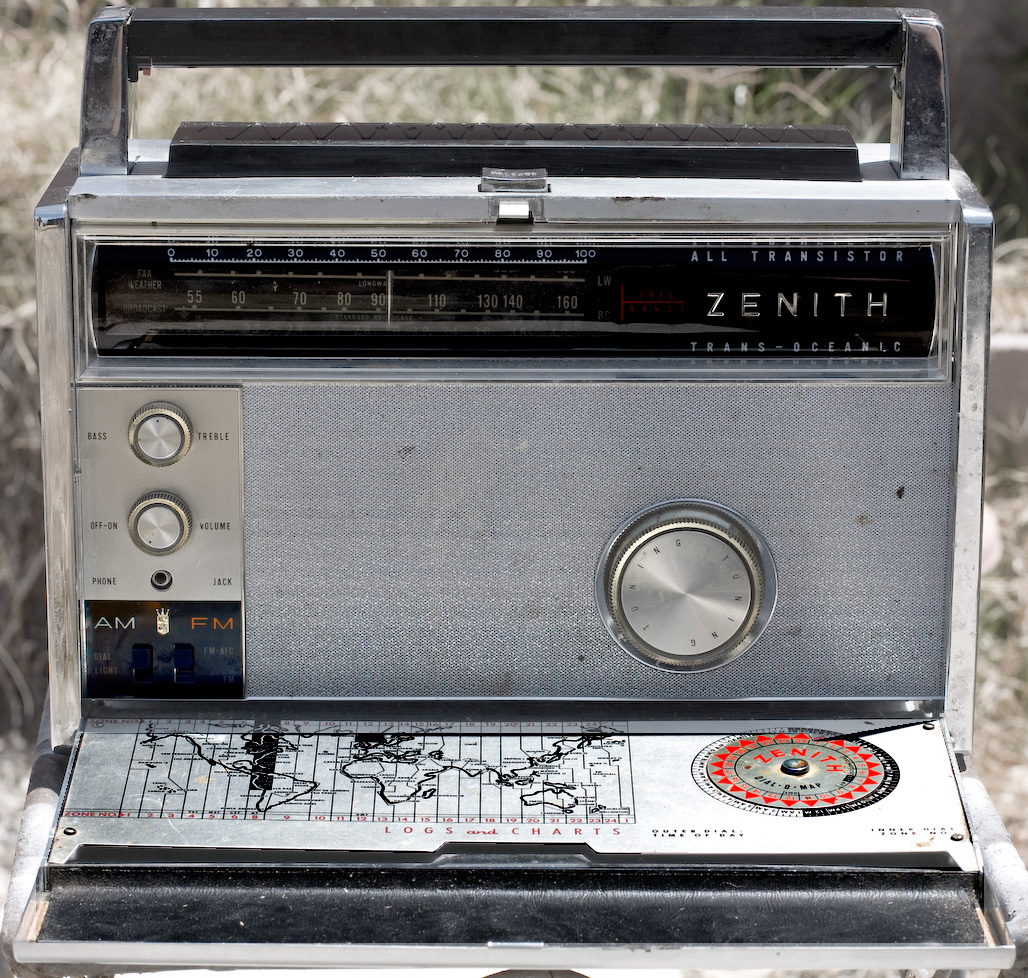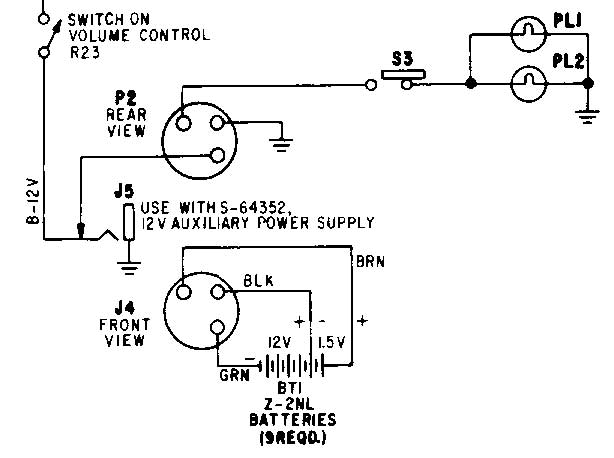
 This is the Royal 3000, the second of four solid state T-Os from Zenith; it was made between 1963 and 1971. It was originally listed at $275 until the Royal 7000 was introduced in 1969.
This is the Royal 3000, the second of four solid state T-Os from Zenith; it was made between 1963 and 1971. It was originally listed at $275 until the Royal 7000 was introduced in 1969.
I haven't done much research on it, but what I gather is that the big difference between this one and the Royal 1000 is that the 3000 offers FM band tuning as well as AM shortwave, and that the 13-meter band was dropped. I don't remember ever listening to anything on that band so I doubt I'd miss it; but someone must have because Zenith restored it in the 7000 models.
The 3000 also does away with the separate, plug-in Wavemagnet, and I don't miss it. One of the great irritants of the Royal 1000 is trying to close the back. Between the battery compartment and the twin-lead cable on the wavemagnet, it's almost like putting together a 3D puzzle. That was one of the beauties of the big, tube-job cabinets: there was plenty of space for stuff like that.
Mine arrived like Jacob Marley at the beginning of A Christmas Carol. Initially I'd thought the batteries were spent, but a new set didn't change anything. There was a little bit of acid corrosion on the contacts but cleaning didn't help; and a check with the voltmeter showed that I was getting power from it's plug (the battery compartiment is removable and plugs in to a special socket inside). Something was bad downstream.
A look at the schematic shows that the battery power goes through the A/C jack and then onward. But the dial lights don't. That's an important clue—even the dial lights wouldn't work.
This is one of the funky things about this radio. It runs off nine D batteries. 9! Eight of them provide the 12V to run the radio, with an extra cell routed off to run the two lamps. The lamps have their own circuit, which is off the third pin on the battery-case socket.
 Now if look at the A/C jack, it only has two points in common with the battery case: 1 pin on the socket and chassis-ground. If you plug in the A/C adapter, 12V power goes directly to the on-off switch and onto into the radio circuit. It doesn't run the dial lamps. Dial lights on battery radios have momentary switches because they suck current and drain batteries, but that's not a problem when you're running off house current. But when you run off house current with this radio, you don't get the use of dial lights unless you put a D-cell in the battery compartment to run them. Jesus Christos.
Now if look at the A/C jack, it only has two points in common with the battery case: 1 pin on the socket and chassis-ground. If you plug in the A/C adapter, 12V power goes directly to the on-off switch and onto into the radio circuit. It doesn't run the dial lamps. Dial lights on battery radios have momentary switches because they suck current and drain batteries, but that's not a problem when you're running off house current. But when you run off house current with this radio, you don't get the use of dial lights unless you put a D-cell in the battery compartment to run them. Jesus Christos.
Anyway, I made up an A/C adapter using a spare wall wart; I snipped off the old socket and soldered a 1/8" mini-plug (monoaural) in its place. (If you do this yourself, remember this is chassis positive, so put the + wire on the shank and the - wire on the tip). Plugged it in: nothing.
The voltmeter told me there was no power at the points where the wires connected to the jack. Some cleaning of the jack and bending to get better contacts fixed that problem. I may have defeated the cut-off capability (where the batteries would be disconnected when the A/C adapter is plugged in) but since I don't plan to have both in at the same time, I'm not bothered by the idea. The radio came on—seemed to play on all bands, so I'm happy. Both AM and FM reception and sound are good, so (knock wood) I don't have to pull the thing apart to do anything else.
The dial lights appear to be not working. I'll play more with that, but I'm not tearing the thing apart to get to them. It's not worth the hassle when a flashlight will do the job just as well.
Current status: plays..
